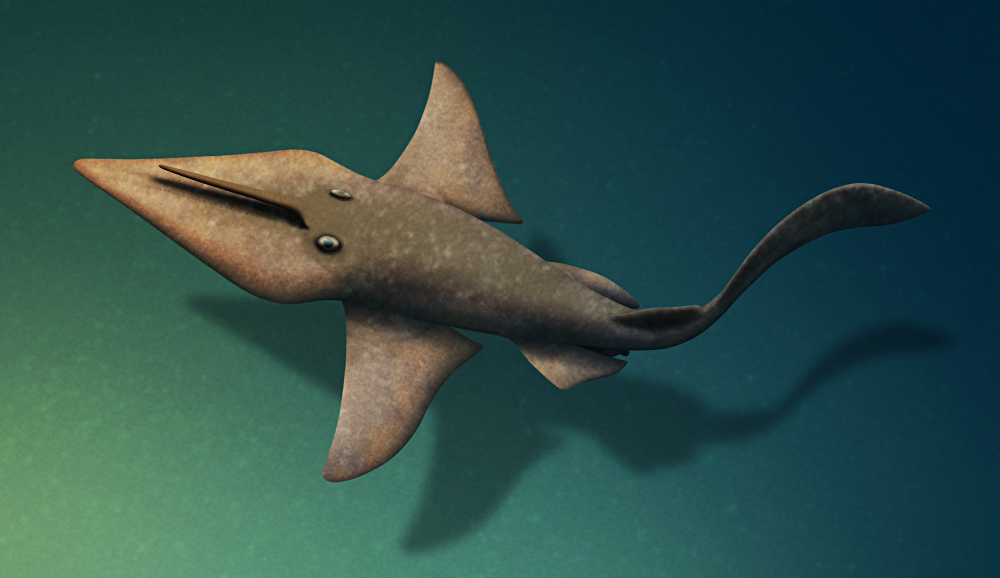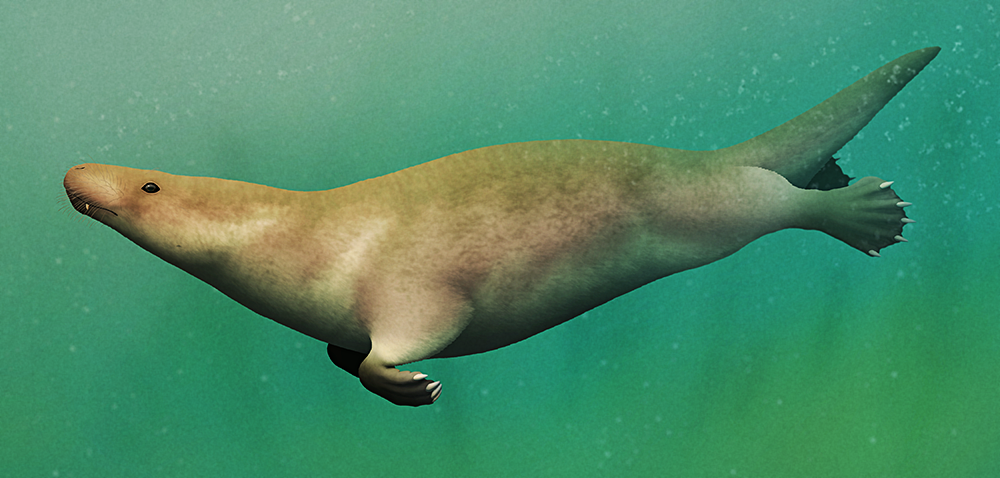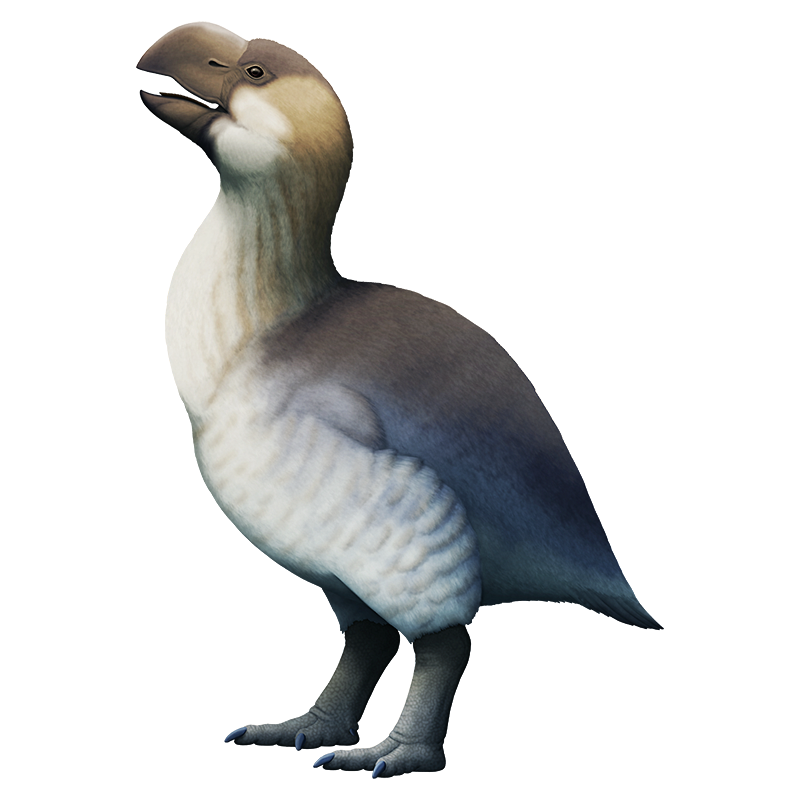Discovered in the late 1820s by pioneering paleontologist Mary Anning, the odd-looking fossil of the cartilaginous fish Squaloraja polyspondyla seemed to have characteristics of both sharks and rays.
It was initially thought to be a “missing link” transitional form between those two groups, but later it was identified as being something else entirely – it was actually part of the chimaera lineage, much closer related to modern ratfish, and its ray-like features were due to convergent evolution for a bottom-feeding lifestyle.
Living during the early Jurassic period, about 200-195 million years ago, Squaloraja fossils are now known from the south coast of England, southern Belguim, and northern Italy. Around 30cm long (1’), this weird fish had a massive wide flat snout that looked like an even more extreme version of the long noses seen in some of its modern relatives, and this enormous snoot would have been absolutely packed with sensory receptors to help it locate small aquatic prey hidden in the muddy seafloor.
Some specimens also have a distinctive long horn-like spine on their foreheads, and since these individuals also have claspers it seems like this was a sexually dimorphic feature. Much like the smaller head claspers on modern chimaeras, male Squaloraja probably used this “horn” to hang onto females’ pectoral fins during mating – and with it being such a large elaborate structure it may also have been used for visual display purposes, too.




